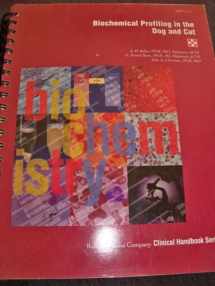
Biochemical Profiling in the Dog and Cat
Book details
Summary
Description
Biochemical Profiling in the Dog and Cat has been developed to aid veterinary practitioners and students in their systemic evaluation of clinical laboratory data. This book is designed to be used in conjunction with Hemogram Interpretation for Dogs and Cats. The text has been organized into four parts for easy use. Part I (chapters 1-4) covers basic information on biochemical profiling as well as interpretation of the hemogram, urinalysis, and acid-base balance. Many of the tests used to evaluate acid-base balance are part of most large biochemical profiles; however, because acid-base disturbances are non-specific and can occur in diseases of many organ systems, acid-base balance is considered along with hemogram and urinalysis data. In Part II (chapters 5-9), each major organ system is discussed independently and a specific test panel is outlined for each. The specific panel represents a subset of the standard large chemistry profile and consists of those tests which should be evaluated first and as a unit whenever involvement of the given organ is suspected on the basis of history, clinical signs, and physical examination. The rationale for the use and interpretation of each test in the organ system panel is briefly outlined and a series of cases that illustrate the principles of interpretation for each organ system is then provided. (In some instances, the data have been modified for teaching purposes.) Part III (chapter 10) consists of a series of case studies presented as "unknowns." The reader is encouraged to apply the principles outlined in Parts I and II to interpret the data presented. For each case, the authors' interpretations are included. Part IV includes important reference material.


We would LOVE it if you could help us and other readers by reviewing the book
Book review



